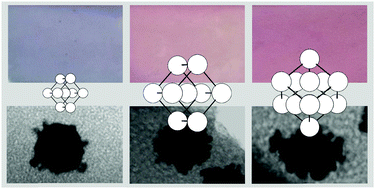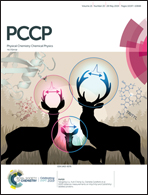TiO2 mesoporous thin film architecture as a tool to control Au nanoparticles growth and sensing capabilities†
Abstract
In this paper, a systematic study regarding the effect of the mesoporous structure over Au nanoparticles (NPs) growth inside and through the pores of mesoporous TiO2 thin films (MTTFs) is presented, and the effect of such characteristics over the composites’ sensing capabilities is evaluated. Highly stable MTTFs with different pore diameters (range: 4–8 nm) and pore arrangements (body- and face-centered cubic) were synthesized and characterized. Au NPs were grown inside the pores, and it was demonstrated—through a careful physicochemical characterization—that the amount of incorporated Au and NP size depends on the pore array; being higher for bigger pore diameters and face-centered cubic structures. The same structure allows the growth of more and longer tips over Au NPs deposited at the thin film–substrate interface. Finally, to confirm the effect of the structural characteristics of the composites over their possible applications, the materials were tested as surface-enhanced Raman scattering (SERS)-based substrates. The composites with a higher amount of Au and more ramified NPs were the ones that presented better sensitivity in the detection of a probe molecule (4-nitrothiophenol). Overall, this work demonstrates that the pore size and ordering in MTTFs determine the materials’ accessibility and connectivity, and therefore, have a clear impact on their potential applications.

- This article is part of the themed collections: Celebrating Latin American Talent in Chemistry and 2019 PCCP HOT Articles


 Please wait while we load your content...
Please wait while we load your content...